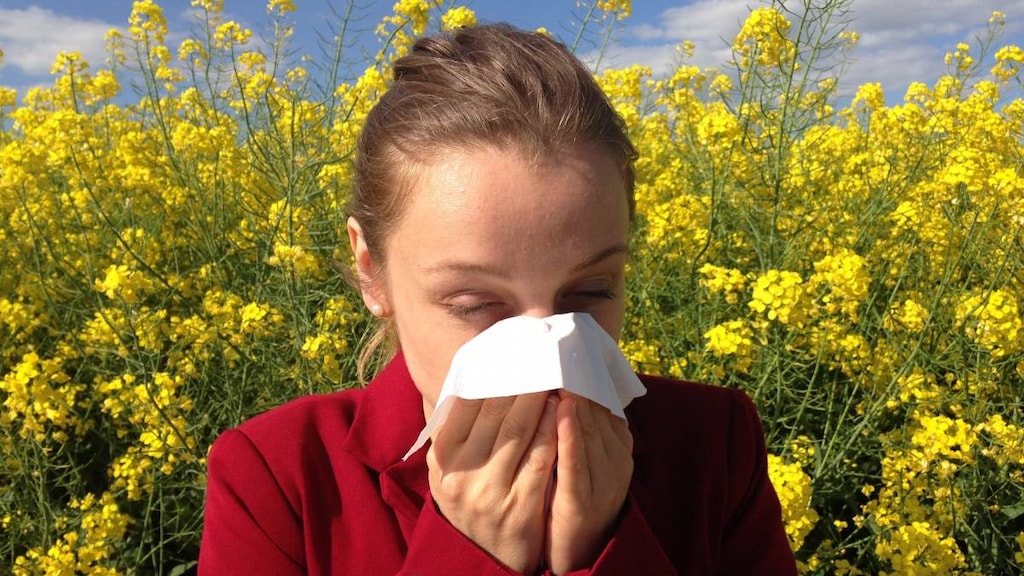Dosage Forms
Excipient information presented when available (limited, particularly for generics); consult specific product labeling. [DSC] = Discontinued product
Aerosol, Nasal, as acetonide:
GoodSense Nasal Allergy Spray: 55 mcg/actuation (16.9 mL) [contains benzalkonium chloride, edetate disodium, polysorbate 80]
Nasacort Allergy 24HR: 55 mcg/actuation (10.8 mL, 16.9 mL) [alcohol free; contains benzalkonium chloride, edetate disodium, polysorbate 80]
Nasacort Allergy 24HR Children: 55 mcg/actuation (10.8 mL) [contains benzalkonium chloride, edetate disodium, polysorbate 80]
Nasal Allergy 24 Hour: 55 mcg/actuation (16.9 mL) [contains benzalkonium chloride, edetate disodium, polysorbate 80]
Generic: 55 mcg/actuation (16.5 g [DSC], 16.9 mL)
Pharmacology
Mechanism of Action
Controls the rate of protein synthesis, depresses the migration of polymorphonuclear leukocytes and fibroblasts, reverses capillary permeability, and stabilizes lysosomal membranes at the cellular level to prevent or control inflammation
Pharmacokinetics/Pharmacodynamics
Absorption
Systemic absorption may occur following intranasal administration.
Excretion
Urine (~40%); feces (~60%)
Half-Life Elimination
Biologic: 18-36 hours; Terminal (intranasal): 3.1 hours
Use: Labeled Indications
Allergic rhinitis (Rx products): Management of seasonal and perennial allergic rhinitis in adults and children 2 years and older
Upper respiratory allergies (OTC products): Relief of hay fever and other upper respiratory allergies (eg, nasal congestion, runny nose, sneezing, itchy nose) in adults and children 2 years and older
Use: Off Label
Acute bacterial rhinosinusitis, adjunct to antibiotics (empiric treatment)yes
Based on the Infectious Diseases Society of America (IDSA) guidelines for acute bacterial rhinosinusitis (ABRS) in children and adults and the American Academy of Otolaryngology-Head and Neck Surgery Foundation (AAO-HNS) guidelines for adult sinusitis, triamcinolone (nasal), among other intranasal corticosteroids, is effective and recommended as an adjunctive treatment to antibiotic therapy for the management of ABRS primarily when a history of allergic rhinitis exists (according to IDSA guidelines).
Chronic rhinosinusitisyes
Based on the American Academy of Otolaryngology-Head and Neck Surgery Foundation (AAO-HNS) guidelines for adult sinusitis, triamcinolone (nasal), among other intranasal corticosteroids, is effective and recommended (with or without nasal saline irrigation) for the symptomatic relief of chronic rhinosinusitis.
Contraindications
Hypersensitivity to triamcinolone or any component of the formulation
OTC labeling: When used for self-medication, do not use in children <2 years of age.
Documentation of allergenic cross-reactivity for corticosteroids is limited. However, because of similarities in chemical structure and/or pharmacologic actions, the possibility of cross-sensitivity cannot be ruled out with certainty.
Canadian labeling: Additional contraindications (not in US labeling): Active or quiescent tuberculosis, or untreated fungal, bacterial and viral infection.
Dosage and Administration
Dosing: Adult
Allergic rhinitis/upper respiratory symptoms: Intranasal: Two sprays (110 mcg) in each nostril once daily; once symptoms controlled reduce to 1 spray (55 mcg) in each nostril once daily (maximum: 2 sprays [110 mcg] in each nostril once daily). Discontinue therapy if adequate symptomatic relief is not observed within 3 weeks (1 week for OTC use).
Dosing: Geriatric
Refer to adult dosing.
Dosing: Pediatric
Rhinitis, allergic (seasonal and perennial): Discontinue treatment and contact health care provider if adequate control of symptoms has not occurred after 3 weeks of use (1 week if OTC use): Intranasal: 55 mcg/spray:
Children 2 to <6 years: One spray per nostril once daily. (Total daily dose 110 mcg/day). Maximum daily dose: 1 spray per nostril/day (110 mcg/day)
Children 6 to <12 years: Initial: One spray per nostril once daily (Total daily dose: 110 mcg/day); may increase to 2 sprays per nostril once daily if response not adequate (Total daily dose 220 mcg/day); once symptoms are controlled, reduce to 1 spray per nostril once daily (Total daily dose 110 mcg/day). Maximum daily dose: 2 sprays per nostril/day (220 mcg/day)
Children ≥12 years and Adolescents: Initial: Two sprays per nostril once daily (Total daily dose: 220 mcg/day); once symptoms are controlled, reduce dose to 1 spray per nostril once daily (total daily dose: 110 mcg/day). Maximum daily dose: 2 sprays per nostril/day (220 mcg/day)
Administration
Shake well prior to use. Gently blow nose to clear nostrils. Avoid spraying into mouth or eyes and do not blow nose for 15 minutes after use. Prime prior to first use by shaking contents well and releasing 5 sprays into the air. If product is not used for more than 2 weeks, reprime with 1 spray. Consider use of a nasal vasoconstrictor for 2 to 3 days before initiating therapy in patients with excessive nasal mucous secretion or nasal mucosa edema.
Storage
Store at 20°C to 25°C (68°F to 77°F); do not freeze.
Drug Interactions
Desmopressin: Corticosteroids (Nasal) may enhance the hyponatremic effect of Desmopressin. Avoid combination
Esketamine: Corticosteroids (Nasal) may diminish the therapeutic effect of Esketamine. Management: Patients who require a nasal corticosteroid on an esketamine dosing day should administer the nasal corticosteroid at least 1 hour before esketamine. Consider therapy modification
Ritodrine: Corticosteroids may enhance the adverse/toxic effect of Ritodrine. Monitor therapy
Adverse Reactions
>10%:
Central nervous system: Headache (2% to 51%)
Respiratory: Pharyngitis (5% to 25%)
1% to 10%:
Cardiovascular: Facial edema (1% to 3%)
Central nervous system: Pain (1% to 3%), voice disorder (1% to 3%)
Dermatologic: Skin photosensitivity (1% to 3%), skin rash (1% to 3%), burning sensation of the nose (≥2%; transient)
Endocrine & metabolic: Weight gain (1% to 3%), dysmenorrhea (≥2%)
Gastrointestinal: Dysgeusia (5% to 8%), dyspepsia (3% to 5%), abdominal pain (1% to 5%), nausea (2% to 3%), diarrhea (1% to 3%), oral candidiasis (1% to 3%), toothache (1% to 3%), vomiting (1% to 3%), xerostomia (1% to 3%)
Genitourinary: Cystitis (1% to 3%), urinary tract infection (1% to 3%), vulvovaginal candidiasis (1% to 3%)
Hypersensitivity: Hypersensitivity reaction (≥2%)
Infection: Infection (≥2%)
Neuromuscular & skeletal: Back pain (2% to 8%), bursitis (1% to 3%), myalgia (1% to 3%), tenosynovitis (1% to 3%)
Ophthalmic: Conjunctivitis (1% to 4%)
Otic: Otitis media (≥2%)
Respiratory: Flu-like symptoms (2% to 9%), sinusitis (2% to 9%), cough (≤8%), epistaxis (≤5%), bronchitis (children: 3%), chest congestion (1% to 3%), asthma (≥2%), rhinitis (≥2%), stinging sensation of the nose (≥2%; transient)
<1%, postmarketing, and/or case reports: Anaphylaxis, cataract, decreased bone mineral density (prolonged use), decreased plasma cortisol, dizziness, dry throat, dyspnea, fatigue, glaucoma, growth suppression, hoarseness, increased intraocular pressure, insomnia, nasal septum perforation, osteoporosis (prolonged use), pruritus, sneezing, throat irritation, urticaria, wheezing, wound healing impairment
Warnings/Precautions
Concerns related to adverse effects:
- Adrenal suppression: When used at excessive doses, may cause hypercortisolism or suppression of hypothalamic-pituitary-adrenal (HPA) axis, particularly in younger children or in patients receiving high doses for prolonged periods. HPA axis suppression may lead to adrenal crisis. Withdrawal and discontinuation of a corticosteroid should be done slowly and carefully. Particular care is required when patients are transferred from systemic corticosteroids to inhaled products due to possible adrenal insufficiency or withdrawal from steroids, including an increase in allergic symptoms.
- Delayed wound healing: Avoid use in patients with recent nasal septal ulcers, nasal surgery, or nasal trauma until healing has occurred.
- Immunosuppression: Prolonged use of corticosteroids may increase the incidence of secondary infection, mask acute infection (including fungal infections), prolong or exacerbate viral infections, or limit response to vaccines. Exposure to chickenpox and/or measles should be avoided.
- Local nasal effects: Nasal septal perforation, nasal ulceration, epistaxis, and localized Candida albicans infections of the nose and/or pharynx may occur. Monitor patients periodically for adverse nasal effects.
Disease-related concerns:
- Infections: Use caution or avoid in patients with ocular herpes simplex, latent tuberculosis, and/or TB reactivity, or in patients with untreated fungal, viral, or bacterial infections.
- Ocular disease: Use with caution in patients with cataracts and/or glaucoma; increased intraocular pressure, open-angle glaucoma, and cataracts have occurred with prolonged use. Consider routine eye exams in chronic users.
Special populations:
- Pediatric: Avoid using higher than recommended dosages; suppression of linear growth (ie, reduction of growth velocity), reduced bone mineral density, or hypercortisolism (Cushing syndrome) may occur; titrate to lowest effective dose. Reduction in growth velocity may occur when corticosteroids are administered to pediatric patients, even at recommended doses via intranasal route (monitor growth).
Other warnings/precautions:
- Self-medication (OTC use): Consult a health care provider before use if you have had recent nose ulcers or nose surgery; have a nose injury that has not healed; or are using a steroid for asthma, allergies or skin rash. Discontinue use and consult a health care provider if symptoms do not improve after 1 week, or if infection (eg, persistent fever), changes in vision, or frequent nosebleeds occur. Do not use for the common cold.
Monitoring Parameters
Growth (adolescents and children); signs/symptoms of HPA axis suppression/adrenal insufficiency; ocular changes; signs/symptoms of Candida infection (long-term therapy)
Pregnancy
Pregnancy Considerations
Information related to the use of intranasal triamcinolone in pregnant women is limited (Bérard 2016). Intranasal corticosteroids, including triamcinolone, may be acceptable for the treatment of rhinitis during pregnancy when used at recommended doses (Lal 2016; Wallace 2008). Pregnant females adequately controlled on triamcinolone may continue therapy; if initiating treatment during pregnancy, use of an agent with more data in pregnant females may be preferred (Namazy 2016; Wallace 2008).
Patient Education
What is this drug used for?
- It is used to ease allergy signs.
- It is used to treat nose stuffiness.
Frequently reported side effects of this drug
- Nosebleed
- Stuffy nose
- Headache
- Change in taste
- Flu-like symptoms
- Sore throat
Other side effects of this drug: Talk with your doctor right away if you have any of these signs of:
- Infection
- High blood sugar like confusion, fatigue, increased thirst, increased hunger, passing a lot of urine, flushing, fast breathing, or breath that smells like fruit
- Adrenal gland problems like severe nausea, vomiting, severe dizziness, passing out, muscle weakness, severe fatigue, mood changes, lack of appetite, or weight loss
- Cushing syndrome like weight gain in upper back or abdomen; moon face; severe headache; or slow healing
- Nasal sores
- Wheezing
- Thrush
- Vision changes
- Signs of a significant reaction like wheezing; chest tightness; fever; itching; bad cough; blue skin color; seizures; or swelling of face, lips, tongue, or throat.
Note: This is not a comprehensive list of all side effects. Talk to your doctor if you have questions.
Consumer Information Use and Disclaimer: This information should not be used to decide whether or not to take this medicine or any other medicine. Only the healthcare provider has the knowledge and training to decide which medicines are right for a specific patient. This information does not endorse any medicine as safe, effective, or approved for treating any patient or health condition. This is only a brief summary of general information about this medicine. It does NOT include all information about the possible uses, directions, warnings, precautions, interactions, adverse effects, or risks that may apply to this medicine. This information is not specific medical advice and does not replace information you receive from the healthcare provider. You must talk with the healthcare provider for complete information about the risks and benefits of using this medicine.




